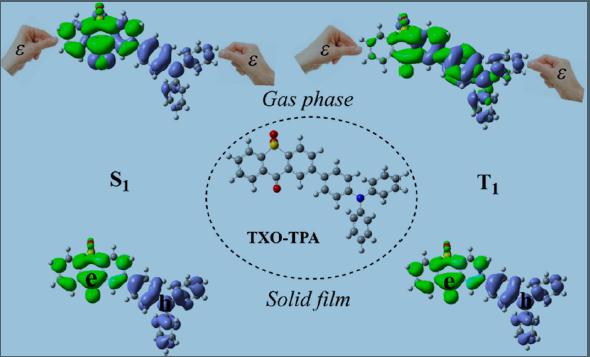Thermally activated delayed fluorescence (TADF) relies on the presence of a very small energy gap, ΔEST, between the lowest singlet and triplet excited states. ΔEST is thus a key factor in the molecular design of more efficient materials. However, its accurate theoretical estimation remains challenging, especially in the solid state due to the influence of polarization effects. We have quantitatively studied ΔEST as a function of dielectric constant, ε, for four representative organic molecules using the methodology we recently proposed at the Tamm−Dancoff approximation ωB97X level of theory, where the range-separation parameter ω is optimized with the polarizable continuum model. The results are found to be in very good agreement with experimental data. Importantly, the polarization effects can lead to a marked reduction in the ΔEST value, which is favorable for TADF applications. This ΔEST decrease in the solid state is related to the hybrid characters of the lowest singlet and triplet excited states, whose dominant contribution switches to charge-transfer-like with increasing ε. The present work provides a theoretical understanding on the influence of polarization effect on the singlet−triplet gap and confirms our methodology to be a reliable tool for the prediction and development of novel TADF materials.


